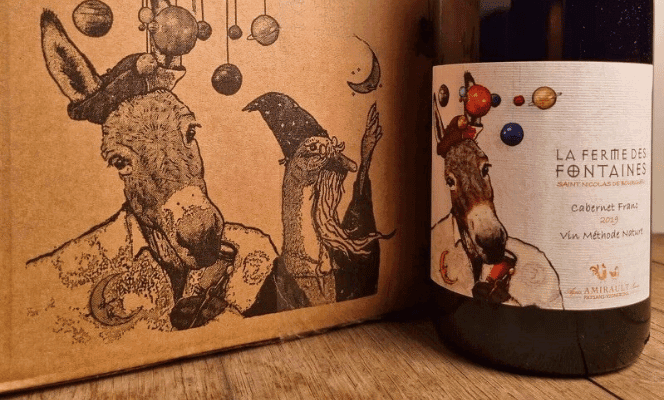18 September 2025
What Is Natural Wine?
Even if you’re only slightly into wine, you’ve probably heard about natural wine. The natural wine movement has grown fast here in the UK – yet many people still wonder what natural wine actually is, and how it compares to organic and biodynamic wines. Let’s break it down.
What does “natural” mean for wine?
We see the word natural everywhere – from bread to shampoo. But what does it really mean when it comes to wine?
According to Isabelle Legeron MW, author of Natural Wine: An Introduction to Organic and Biodynamic Wines Made Naturally:
“Natural wine is a continuum… At the epicentre are growers who produce wines absolutely naturally — nothing added and nothing removed.”
That’s the key idea: minimal intervention. Natural winemakers aim to let the grapes (and nature) do the work, stepping in as little as possible.
What counts as a ‘natural’ wine?
There’s no single legal definition of natural wine (except in France, where ‘Vin Méthode Nature’ sets formal rules). Still, most natural wines tend to:
-
Come from small-scale, independent growers
-
Be made from organically or biodynamically grown grapes (though not always certified)
-
Be fermented with native yeasts – no commercial yeast added
-
Have no additives like acid, sugar, tannin, or colourants
-
Use very little or no added sulphur (far less than conventional wines)
-
Be unfined and unfiltered, often appearing cloudy or hazy
Vin Méthode Nature wines must also be hand-harvested and certified organic, with zero additives and very low or no sulphur.
How is natural wine different from “normal” wine?
| Natural Wine | Conventional Wine |
|---|---|
|
|
|
|
|
|
|
|
|
|
So, while “normal” wines are often shaped by human intervention, natural wines are left to express the vineyard and vintage as purely as possible.
Are natural wines sulphite free?

Not completely. Most natural winemakers use very low amounts of sulphur (often under 50 parts per million), and some use none at all, and tiny amounts of sulphur are produced naturally during the fermentation process. Organic wines also have lower sulphur limits than conventional wines, and many organic winemakers now make “low sulphur” or “no sulphur added” wines. However, “no sulphur added” doesn’t automatically mean “natural” – as commercial yeast may still be used.
Do natural wines contain additives?
Generally, no, apart from tiny amounts of sulphur. Conventional winemaking can legally use dozens of additives: tartaric acid (to brighten flavour), sugar (to prolong fermentation), water (to lower alcohol), and selected yeasts (to control fermentation) are all common. Natural wines avoid all of this – but because the term isn’t regulated, it’s worth asking for details to be sure.
Are natural wines always organic or biodynamic?
Not always. Most natural wines are made with organic or biodynamic practices, but they might not carry certification. The only way to be sure a wine is certified organic or biodynamic is to look for the certification mark. At Vintage Roots, we only import and sell wines that are certified organic or biodynamic, or are from producers in conversion. Certification ensures accountability – and consumer confidence.
Are organic wines natural wines?
They can be, but not necessarily. Orange wines are white wines fermented on their skins (like red wines), giving them a distinctive amber colour and often a slightly nutty, funky or cider-like taste. They’re often made in a natural, non-intervention style, which is why they’re commonly grouped with natural wines – but not all orange wines are natural, and not all natural wines are orange.
Are there downsides to natural wine?
There can be a few:
-
Lack of regulation: anyone can label a wine “natural”
-
Higher prices: many cost £15–£20+ a bottle
-
Slightly higher risk of spoilage due to low sulphur (though well-made ones are stable)
That said, at Vintage Roots we carefully select our low- and no sulphur added wines, and have found no greater spoilage risk than with other wines.
What should I expect from natural wine?
-
Cloudy appearance (unfiltered)
-
Sediment at the bottom
-
Wild aromas: earthy, nutty, sometimes farmyard-like
-
Lively, vivid flavours: sometimes yeasty, tangy or lightly fizzy
Some need to breathe for hours or be decanted. Others are immediately expressive. They can be wonderfully food-friendly and full of character – just don’t expect them to taste like supermarket wine!
Can I buy natural wines from Vintage Roots?
Yes! Many of our wines are both certified organic and made in a natural style. We don’t use a special “natural” symbol on our site, but you can explore our range of organic, biodynamic, low sulphur and no sulphur added wines, which often tick a lot of the natural wine boxes.
A good place to start for organically made natural wines is Meinklang. This family-run estate on the Austria–Hungary border, known for its vibrant, characterful wines made in a natural, low-intervention style. They farm biodynamically, use native yeasts and avoid additives and heavy manipulation, letting each wine reflect its wild, living vineyard origins.
Explore their full range here.
💚 In short: Natural wines = minimal intervention – grapes grown with care, fermented with wild yeasts, and made without additives or heavy manipulation. They’re vibrant, unpredictable, and full of life – and that’s why they’ve grown in popularity in recent years.


